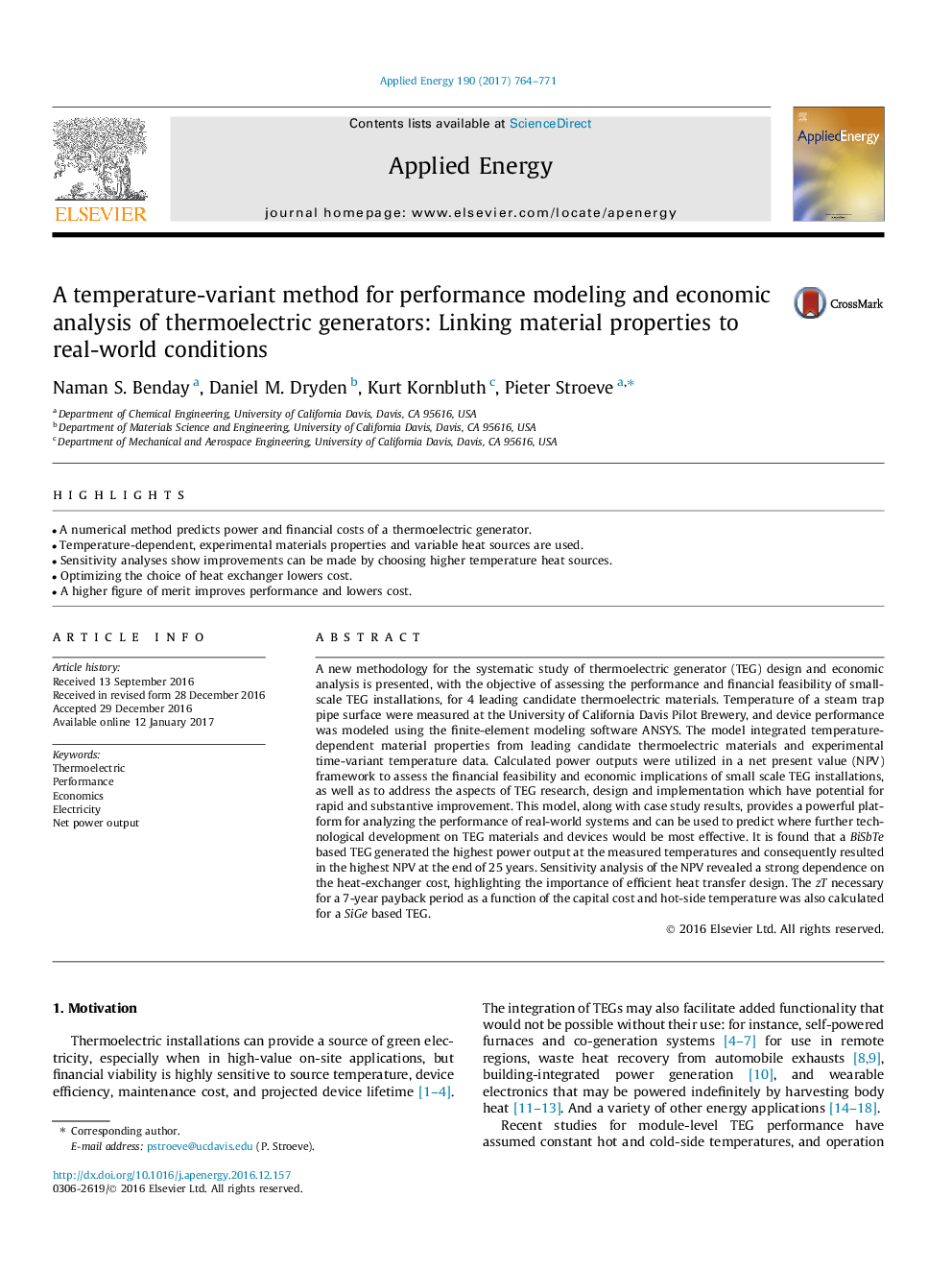| Article ID | Journal | Published Year | Pages | File Type |
|---|---|---|---|---|
| 6478591 | Applied Energy | 2017 | 8 Pages |
â¢A numerical method predicts power and financial costs of a thermoelectric generator.â¢Temperature-dependent, experimental materials properties and variable heat sources are used.â¢Sensitivity analyses show improvements can be made by choosing higher temperature heat sources.â¢Optimizing the choice of heat exchanger lowers cost.â¢A higher figure of merit improves performance and lowers cost.
A new methodology for the systematic study of thermoelectric generator (TEG) design and economic analysis is presented, with the objective of assessing the performance and financial feasibility of small-scale TEG installations, for 4 leading candidate thermoelectric materials. Temperature of a steam trap pipe surface were measured at the University of California Davis Pilot Brewery, and device performance was modeled using the finite-element modeling software ANSYS. The model integrated temperature-dependent material properties from leading candidate thermoelectric materials and experimental time-variant temperature data. Calculated power outputs were utilized in a net present value (NPV) framework to assess the financial feasibility and economic implications of small scale TEG installations, as well as to address the aspects of TEG research, design and implementation which have potential for rapid and substantive improvement. This model, along with case study results, provides a powerful platform for analyzing the performance of real-world systems and can be used to predict where further technological development on TEG materials and devices would be most effective. It is found that a BiSbTe based TEG generated the highest power output at the measured temperatures and consequently resulted in the highest NPV at the end of 25Â years. Sensitivity analysis of the NPV revealed a strong dependence on the heat-exchanger cost, highlighting the importance of efficient heat transfer design. The zT necessary for a 7-year payback period as a function of the capital cost and hot-side temperature was also calculated for a SiGe based TEG.
